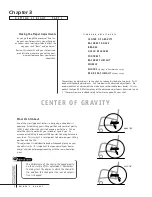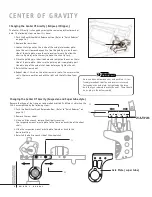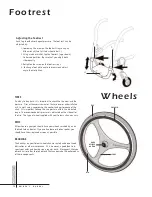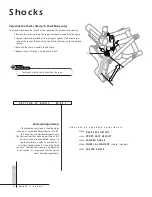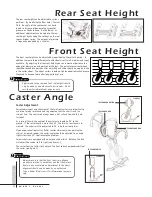
The sections, on adjustments to the chair, have been divided into two parts. Part 1
deals with standard adjustments. Part Two deals with advanced adjustments. We
recommend that all adjustments be made by an authorized Colours dealer. It is im-
portant that you DO NOT attempt any of the advanced adjustments discussed in part
2. Those sections are included solely to familiarize you with your chair.
G E T T I N G I T R I G H T P A R T 1
Making the Proper Adjustments
As you go through the process of fine tun-
ing your new Colours chair, you will experi-
ence how much small adjustments effect the
way your chair “feels” and “performs.”
Review this checklist with your Colours rep-
resentative to make sure you get the maxi-
mum performance from your Colours
wheelchair.
C E N T E R O F G R AV I T Y
BAC K R E S T A N G L E
B R A K E S
Q U I C K R E L E A S E S
F O OT R E S T
BAC K R E S T H E I G H T
W H E E L S
S H O C K S
( B o i n g ! & S h o c k B l a d e o n l y )
R E A R S E AT H E I G H T
( S a b e r o n l y )
S T A N D A R D A D J U S T M E N T S
Chapter 3
C E N T E R O F G R AV I T Y
What It’s All About
One of the most important factors in designing a wheelchair is
geometry. Establishing your sitting position and center of gravity
(COG) is what allows the chair to become a part of you. This en-
ables the chair to work with you instead of against you. In
essence, establishing the correct COG equates to having balance in
your chair. This is why it is so important to determine your sitting
position and the COG.
This adjustment is individualized and will depend greatly on your
wheelchair skills. It is important that you consult your dealer
and/or clinician before experimenting with the rear wheel align-
ment.
The Performance of the chair will depend greatly
on the accuracy of this adjustment. Remember
to always test the degree to which the chair will
tip, and how this changes as the rear wheel posi-
tion is changed.
MORE “TIP”
LESS “TIP”
5
O W N E R ’ S M A N U A L







